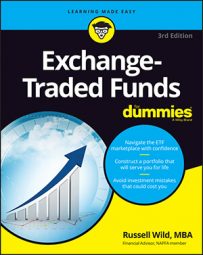ETFs are a huge part of the options market. And options can allow you to capture the gains of the stock market with very limited risk. They also allow you to invest in the market and not have to worry about downturns. What’s not to love about options?
Whoaaa. Not so fast! You need to know a couple little things about options:
-
They are expensive. Every time you buy either a put or a call, you pay. The price can vary enormously depending on the strike price, the expiration date you choose, and the volatility of the ETF the option is based on. But in no case are options cheap. And the vast majority of options reach their expiration date and simply expire.
So, yes, options can save you in a bear market, and they can help you to capture a bull market, but either way, you’re going to pay. Free lunches are very hard to come by!
-
If you happen to make a gain on an option, the income will usually be considered a short-term gain by the IRS. As such, you may pay twice the tax on it that you would on the long-term appreciation of a stock.
The price you pay for options may be worth it — even after taxes are considered. Options provide investors with a variety of viable strategies. The real question is whether using options makes any more sense than investing in a well-diversified portfolio of low-cost ETFs. Most financial professionals are skeptical, including several who have traded heavily in options only to learn the hard way that it is a very tricky business.
So here’s the way to look at it: The chances of success with a steady call strategy are one in three: You win if there’s a bull market; you lose if there’s a bear market; you lose if the market stagnates. Ditto for a put option strategy: you win if there’s a bear market; you lose if there’s a bull market; you lose if the market stagnates. It’s hard to like those odds.
With a well-diversified portfolio of low-cost ETFs — stock, bond, REIT, and commodity ETFs — your chances of success are more like two in three: you lose if there’s a bear market; you win if there’s a bull market; in the case of a stagnant stock market, something in your portfolio will likely continue to make money for you anyway.
One final (but fairly major) consideration: Options trading generally requires much more time and effort than does buy-and-hold investing in a diversified portfolio. Consider this: Would you rather spend your spare time at your computer tinkering with your investments, or would you rather do just about anything but that?

